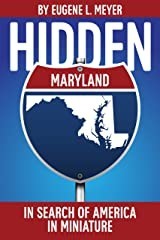“Lest We Forget” and “Content Warning!”
Lest we forget
Today, Nov. 11, is Armistice Day, or at least that’s what it was called before it became in the U.S. Veterans Day and, then, thanks to the powers that be, almost an afterthought in Veterans Day Weekend, a shopping sales bonanza (a three-day weekend with federal offices closed on Friday, Nov. 10). But for a long time, Armistice Day marked the end of The Great War, which became known as The First World War. It came to a close at the eleventh hour of the eleventh day of the eleventh month — at 11 a.m. on November, 11, 1918. The last American to be killed was from Baltimore, a grandson of German immigrants.
He was fatally shot as he advanced despite German troops trying to wave him off, signaling to him that it was all but over “over there.” His death came one minute before the armistice took effect. His name was Henry N. Gunther, and he was 23, shot in the left temple as he stormed a German machine gun nest. A dozen years later, in 1930, the Sgt. Henry Gunther Post #1858 of the Veterans of Foreign Wars was formed in his old East Baltimore neighborhood.
The post no longer exists, but I visited and wrote about it during its twilight years. The story of this unknown solider, “the Great War’s final fallen,” and the post, is included in my book “Hidden Maryland: In Search of America in Miniature,” available in various formats on Amazon. Sadly, the “war to end all wars” didn’t, and wars continue to cause devistation and death in our time.
Content Warning!
The following blog might cause you to think or reflect, or maybe feel bad or sad, or not. Some of the ideas expressed herein you may find discomfiting, or not. Some of the material you might also find, if not alarming, disturbing, or inflammatory then boring, or irrelevant, or not.
But rest assured, dear reader, the following factual content might just merely inform you or perhaps put you to sleep. Whatever. We take no responsibility for any action or inactions which the following may induce. Read ahead at your own risk. Thank you from the author.
The preceding “content warning” was inspired by the alert that increasingly precedes many stories of substance in the media. It seems meant to discourage the overly sensitive reader from plunging ahead into the potentially disconcerting abyss. It feels like the spawn of the parental advisory but treats all readers as fragile individuals who must not be “triggered” by real life.
What triggered this rant were two stories in a recent edition of The Chicago Maroon, the student newspaper I recently happened to pick up in the campus bookshop of the University of Chicago.
“Content warning: This article contains mentions of antisemitism, Islamophobia, and violence,” preceded a front page story about opposing campus protests over Israel and Palestine. So, reader, be forewarned that you might even learn that such terrible things go on, and that perhaps only willful ignorance can act as a shield from the pain of living in a world gone awry.
An inside story on a rally held by Students for Justice in Palestine was preceded by “Content warning: This article contains mentions of violence.” Well, duh. Ya think?
Is this meant as a parental advisory? The university newspaper in loco parentis?
A third story, lacking a warning, reported that the university’s Institute on the Formation of Knowledge had launched a center to provide a platform for “tough conversations.” Can one actually accrue knowledge without “tough” content, whether or not it offers a “safe space?”
“This is the University of Chicago. We don’t shy away from difficult topics,” the executive director was quoted as saying. “We’re going to talk about affirmative action; we’re going to talk about abortion; we’re going to talk about Israel-Palestine.” What no content warning?
Ages ago, when I worked as a young reporter for The Philadelphia Evening & Sunday Bulletin, the editorials were so on-the-one-hand, on-the-other hand, we Young Turks suggested the paper’s motto should be “Lest We Offend.” That insipid motto now seems to apply not only to editorials but also to the news itself. The “content warning “craze appears to underscore another aphorism once said in jest: No news is good news.
But as Brian Broome, a Washington Post columnist, recently wrote: “…don’t be afraid of information. It is scary, but increased access to data and news could teach us more about one another, and that can strengthen our humanity.”
To which I would add my own deeply felt contrarian content warning: The truth – whether you like it or not — shall set you free.
And now a word from our sponsor:
In these trying times, find some Hope, Harmony and Goodwill (actual places on Maryland’s Eastern Shore) in my book “Hidden Maryland: In Search of America in Miniature” , available in paperback, as an e-book on Kindle, and as an audiobook for your listening pleasure.

Great insights Gene. Thank you!
“To which I would add my own deeply felt contrarian content warning: The truth – whether you like it or not — shall set you free.”
comment: Amen. Sadly, too many people don’t want to read truths, only items that confirm their mind sets.